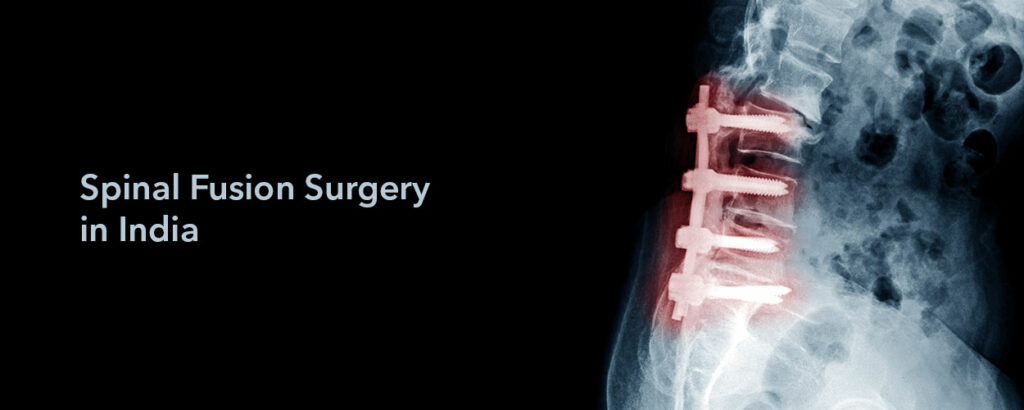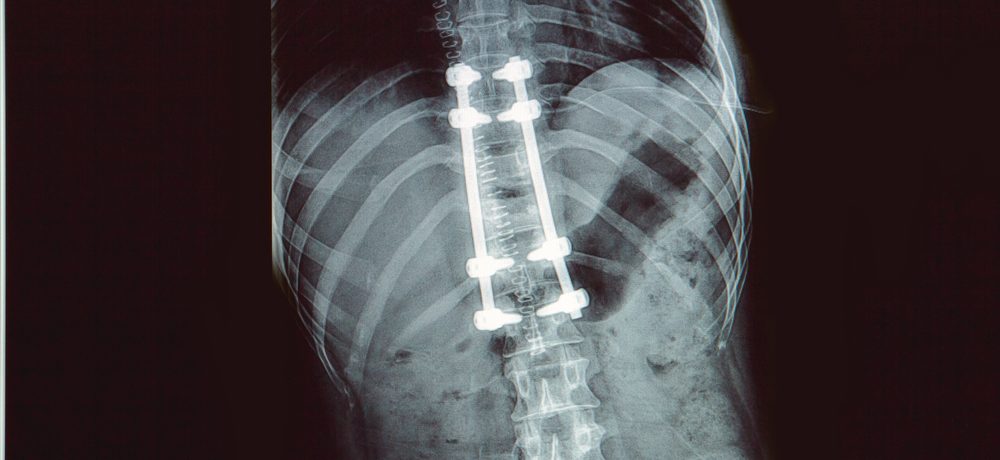Spinal fusion surgery or lumbar spinal fusion is one of the ways to eliminate the severe pain associated with arthritis of the spine. In addition, it is also used to correct the abnormal curvature of the spine, spine rendered unstable because of infection and a fracture or injury to the spinal bones.
This surgery can also be performed in combination with other surgical interventions for the spine. For example, spinal fusion surgery is sometimes performed after diskectomy in the neck or other surgeries for the treatment of spinal stenosis, a type of spinal arthritis.
Spinal fusion surgery joins two or more vertebrae in the spine, hence disabling any movement between them. It is a permanent procedure, which taken around three to four hours and is performed under general anesthesia.
During spinal fusion surgery, a synthetic or natural bone graft is filled between or behind the vertebrae to hold them together and fuse. The natural bone graft is either obtained from another bone in the body, such as pelvic bone, or retrieved from a bone bank.
After placing the graft, the surgeon may use plates, cage, screws or rods to hold the graft in place. This helps prevent the movement of vertebrae until the graft gets permanently adjusted between the vertebrae.
Spinal fusion surgery is a risky procedure, which is not commonly performed in every country. People often have questions about this procedure, including the recovery time, spinal surgery success rate and the risks involved.

Some of the spinal fusion surgery facts are discussed below.
Fact #1: Spinal fusion surgery is not a minor surgery
Spinal fusion surgery may last for several hours and is considered as a major surgery. The patient is surgically operates under the influence of general anesthesia. This is the reason why no pain is felt during the procedure as the patient remains asleep through the entire duration.
The patient is required to stay in the hospital at least four to six days after the surgery. Typically, total bed rest is not usually required when the patient is recovering at home after the discharge.
There are several risks associated with spinal fusion surgery. Therefore, the decision to get the procedure done may be carefully considered. You may even want to take a second or a third opinion before taking the final call.
Fact #2: Rehabilitation after spinal fusion surgery may take weeks or months
Patients planning to undergo the procedure must know that that rehabilitation after spinal fusion surgery may take a long time. Patients hoping for a quick recovery after the procedure often feel disappointed when they are not able to return back to their normal routine within days after the procedure.
Contrary to popular belief that patients should not move at all after the surgery to make the spinal fusion heal better, the rehabilitation experts may suggest a few exercises that should be performed to quicken the healing process. However, patients should completely stay away from any kind of twisting, bending and lifting.
It may take one to three months for patients to recover after the spinal fusion surgery.
Fact #3: Spinal fusion surgery is conducted both as a primary or a follow-up surgery
Spinal fusion surgery may be carried out as a standalone procedure to relieve pain associated with arthritis of the spine and in some cases, to rectify the curvature of the spine in some conditions such as kyphosis and scoliosis. It is also used to treat spine rendered weak and unstable because of tumors or infections and to manage fracture and injury to the spinal bones.
However, spinal fusion surgery may sometimes be conducted as a follow-up surgery as well. There are certain medical procedures that require the surgeons to conduct spinal fusion at the time of the primary surgery. For example, spinal fusion may be conducted after the diskectomy of the neck and in case of other major surgical procedures such as laminectomy and foraminotomy for the treatment of spinal stenosis.
Fact #4: Spinal fusion surgery costs a lot
Patients in need of spinal fusion surgery think twice before opting for the procedure because of the huge costs associated with it. This is especially problematic for patients with no medical insurance coverage.
Several scientific studies conducted in the past have questioned whether it is worth spending a huge amount of money or whether the benefits derived from the spinal fusion surgery is worth the costs.
A cost benefit analysis conducted by a team of researchers in Chicago using Quality Adjusted Life Year (QALY) scale revealed that spinal fusion costs around $115,000 per QALY gained. This is $15,000 greater than the maximum at which medical procedures are considered to be effective in the United States.
However, the cost of spinal fusion surgery depends on the level of medical care you get and the country you are willing to get operate in. The average cost of spinal fusion surgery is quite low in popular medical tourism countries such as India, Poland, Hungary and Turkey, as compared to the US and the UK.
Fact #5: There is no significant difference between spinal fusion surgery and intense rehabilitation for chronic low back pain
Spinal fusion surgery is often needed to stabilize the spine after an infection or an injury to the back bone. However, there are not enough evidences suggesting that it works well for correction of other spine-related problems and the associated pain.
In fact, there is no clear demarcation between intensive rehabilitation programs for chronic back pain and spinal fusion surgery. Both these methods have their own benefits and helps the spine from getting degenerates further, but the added advantage of spinal fusion surgery over intense rehabilitation is not clear.
Fact #6: There is no guarantee that spinal fusion surgery will completely relieve the pain
Despite intensive care and huge costs, there is no guarantee that spinal fusion surgery will make your pain go away completely. Even though, spinal fusion surgery has become a common procedure, spinal surgery success in terms of 100 percent relief isn’t proven yet.
People who had chronic back pain before the surgery are likely to suffer from some amount of pain even after the procedure. Moreover, it is difficult for the doctors to diagnose with the help of MRI and other procedures, whether spinal fusion surgery would actually benefit the patient and up to what extent.
Since vertebrae are fused together during the surgery and the movement is restricted, the parts of spine above and below the area of fusion are likely to be stressed. This may introduce new spine-related problems in the future.
Fact #7: There are risks associated with it
There are several risks associated with spinal fusion surgery, the occurrence and intensity of which may depend on the overall heath status and age of the patient, the type of spinal fusion procedure opted for and the reason for which the surgery is being conducted. Some of the risks involved with the procedure include:
- Nerve injury
- Infection
- Bone graft rejection
- Pain at the site of fusion
- Metal implants breakage
- Fusion failure
- Pulmonary embolism resulting out of blood clots
Fact #8: Minimally invasive spinal fusion procedure has several short-term benefits
Typically, spinal fusion surgery is not considered as effective as traditional techniques for the treatment of spine-related problems. However, a procedure called minimally invasive lumbar spinal fusion through the back is believed to be as effective as traditional techniques when it comes to short-term benefits such as reduced hospital stay, minimal blood loss and less pain. But there is no evidence whether the technique is effective over long-term or not.
Fact #9: The success rate of spinal fusion surgery is less reliable as compared to traditional techniques
The success rate of spinal fusion surgery is not as good as traditional techniques used for the treatment of spine-related problems. There is an increased risk of damage to the nerves and injury to the site of fusion, which may further complicate things in the future.
Fact #10: Not all surgeons perform spinal fusion surgery
It takes hours for the surgeons to perform spinal fusion surgery. Moreover, there are a lot of complications and risks involved with the spinal fusion surgery conducted through the abdomen, as compared to the traditional procedure conducted from the front of the spine. This is the primary reason why a few doctors have stopped performing this procedure.
On the other hand, minimally invasive spinal fusion surgeries conducted through the back and the sides are relatively new and not popular among surgeons. Even though the clinical results of these surgeries may seem promising, there is a lack of evidence in favor of its long-term benefits.


 proccessing your request...
proccessing your request...
Comments